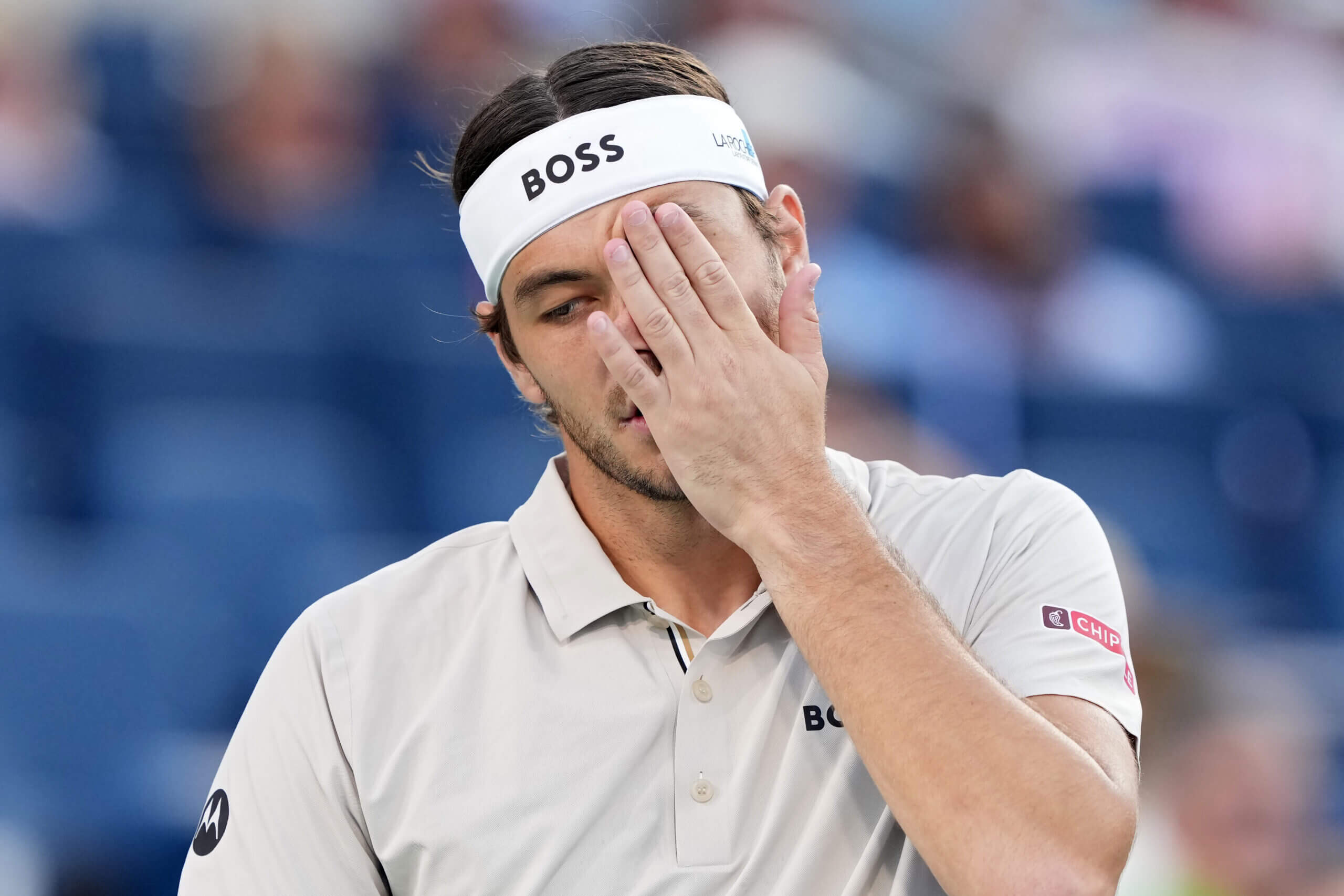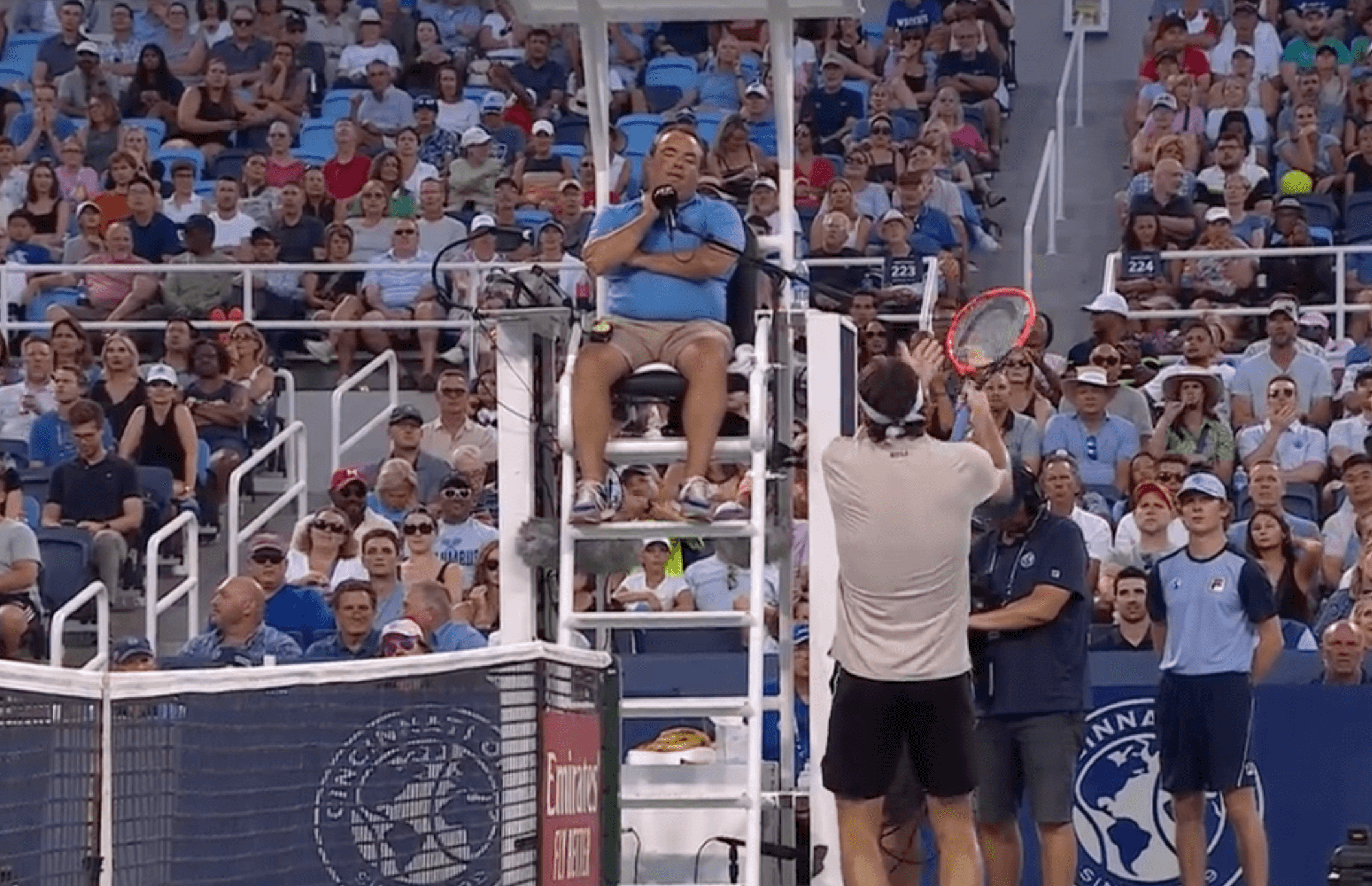
There will be Electronic Line Calling (ELC) at all ATP Tour-level events from 2025, eliminating the possibility of human error on line calls.
On the evidence of Tuesday night at the Cincinnati Open, a Masters 1000 tournament one level below a Grand Slam, it appears not.
In a first-round match between Americans Taylor Fritz and Brandon Nakashima, a malfunction with the ELC system showed that even with no line judges and no challenging of calls, there is still the scope for things to go wrong and for a player to have to make that familiar trudge up to the umpire to make their case.
“I always have to advocate for myself,” Coco Gauff said at the Olympics a couple of weeks ago when she was on what she felt was the rough end of an umpire’s call. Fritz was left with similar sentiments on Tuesday, disbelieving that even with ELC, he and umpire Greg Allensworth still had to do this dance.
During what was ultimately a 6-4, 4-6, 7-6 (4) upset win for Nakashima over the world No 12 Fritz, Nakashima was serving at 2-3, 30-30 in the second set.
He hit a forehand that looked comfortably out that would have seen him down 30-40 and facing a break point.
No “out” call was forthcoming from the ELC.
With no call, the players carried on, even though Fritz looked up when returning the ball as if to suggest that he knew it was out. He hit a forehand and the rally carried on for a few more shots before “stop, stop, stop” was heard. This was not umpire Allensworth, but rather a recording triggered by a review official acknowledging the error. As that happened mid-rally, a let was called by Allensworth.
Allensworth explained to Fritz that it was up to him to stop the point if he thought the ball was out and that, because he didn’t, it had to be a let. Fritz was understandably enraged, saying there’s no expectation for players to self-officiate when ELC is being used.
“OK, no wait, no no no no. Don’t tell me that I need to stop the point when we have electronic line calling,” Fritz said.
He tweeted afterwards: “Imagine telling me I needed to stop the point when we have literal Hawkeye electronic line calling.”
Imagine telling me I needed to stop the point when we have literal Hawkeye electronic line calling 😂 https://t.co/c6O03AaOr7
— Taylor Fritz (@Taylor_Fritz97) August 14, 2024
Fritz also asked why Allensworth hadn’t intervened at the time the ball was out given how clear a call it was. “For me, I thought it was out, too,” the umpire said. “But I can’t do that (overrule the technology).”
He then announced to the crowd that: “Due to a technical error, we will replay the point — 30-30.” Cue boos from the spectators, with the image then flashing up on the television coverage of how far out the ball was.
“It’s actually ridiculous,” Fritz said. “That’s the craziest thing I’ve ever seen,” he added.
Former and current players agreed.
“This is allergic to common sense,” tweeted the former world No 1 Andy Roddick.
Daniil Medvedev said on Instagram: “Ridiculous decision… ball is out, point is over, point to Fritz. How was this not the outcome?”
The ATP rulebook states the following: “If the live ELC system fails to make a call, the call shall be made by the chair umpire. If the chair umpire is unable to determine if the ball was in or out, then the point shall be replayed. This protocol applies only to point-ending shots or in the case when a player stops play.
“In the case where there is no call and the player stops play, the umpire shall call for the shot to be displayed on the video board for confirmation.”

Fritz’s case fell on deaf ears (Tennis TV)
Allensworth was correct in his assertion that a let should be played by the rules, but the rules run contrary to what players and fans expect as common sense, enmeshing ELC in the web of counter-intuition that surrounds other elements of adjudication in tennis.
At the French Open, umpires still get down from their chairs to look at marks on close calls instead of using Hawk-Eye. In this year’s French Open men’s final, Alexander Zverev was on the wrong end of an umpire overrule against Carlos Alcaraz at a crucial moment in the fifth set.
Video replays appeared to show that the original call from a line judge should have stood.
Coco Gauff was also upset by umpire overrules at the French Open and the Olympics, both played at Roland Garros in Paris. On those occasions, she lost the point despite making contact with her shots (and missing them) but being told that the “out” calls had not affected her swing. She vehemently denied this on both occasions.
ELC would have prevented both of these situations, but as Tuesday night shows, if the technology doesn’t work as intended, then there is still the scope for controversy under the current guidelines.
(Top photo: Dylan Buell/Getty Images)